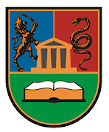Please use this identifier to cite or link to this item:
https://scidar.kg.ac.rs/handle/123456789/20715Full metadata record
| DC Field | Value | Language |
|---|---|---|
| dc.contributor.author | Milenković, Aleksandar | - |
| dc.contributor.author | Krstić, Lazar | - |
| dc.contributor.author | Svičević, Marina | - |
| dc.contributor.editor | Voštinár, Patrik | - |
| dc.contributor.editor | Kobza, Vladimír | - |
| dc.date.accessioned | 2024-05-07T12:46:05Z | - |
| dc.date.available | 2024-05-07T12:46:05Z | - |
| dc.date.issued | 2024 | - |
| dc.identifier.isbn | ISBN 978-80-557-2134-7 (online: iPDF) | en_US |
| dc.identifier.uri | https://scidar.kg.ac.rs/handle/123456789/20715 | - |
| dc.description.abstract | Recently, distance learning has emerged as a focal point of investigation within the field of education, particularly due to the COVID-19 pandemic. Considering the characteristics of mathematics instruction, distance mathematics education has been intensively researched worldwide. In the present research we explore students’ attitudes toward various aspects of distance learning in mathematics. Secondary and high school students (n=532) participated in the study and they expressed their attitudes about distance mathematics education using a Likert-type scale. The survey comprised 26 questions, intending to assess the effectiveness of distance learning and its impact on understanding and acquiring mathematical content. The use of the k-Nearest Neighbors (KNN) classifier helped classify students’ attitudes based on various factors. While KNN does not directly model relationships between variables, its analysis in this research provides insights into the effectiveness of distance learning and its potential impact on students’ ability to acquire mathematical content. To evaluate our model’s performance, we calculated the mean accuracy using cross-validation. The accuracy for the students’ statement that the distance mathematics education was effective is 0.81, and for the for the second statement that students agree that they can adopt mathematical contents in online learning environment is 0.85. These results suggest that our model effectively predicts students’ attitudes toward distance learning in mathematics. Moreover, this methodology provides insights into the effectiveness of distance mathematics instruction and the factors influencing students’ attitudes. | en_US |
| dc.description.uri | https://eme.upol.cz/proceedings/Collection_of_Abstract_EME2024.pdf | en_US |
| dc.language.iso | en | en_US |
| dc.rights | info:eu-repo/semantics/openAccess | - |
| dc.source | 28th scientific conference Elementary Mathematics Education | en_US |
| dc.subject | Distance learning | en_US |
| dc.subject | Mathematics education | en_US |
| dc.subject | k-Nearest Neighbors (KNN) | en_US |
| dc.subject | Prediction | en_US |
| dc.title | ASSESSMENT OF STUDENTS’ ATTITUDES TOWARDS DISTANCE MATHEMATICS LEARNING USING K-NEAREST NEIGHBOUR CLASSIFIER | en_US |
| dc.type | conferenceObject | en_US |
| dc.description.version | Published | en_US |
| dc.type.version | PublishedVersion | en_US |
| Appears in Collections: | Faculty of Science, Kragujevac | |
Files in This Item:
| File | Description | Size | Format | |
|---|---|---|---|---|
| Collection_of_Abstract_Final-30-32.pdf | 120.98 kB | Adobe PDF |  View/Open |
Items in SCIDAR are protected by copyright, with all rights reserved, unless otherwise indicated.

